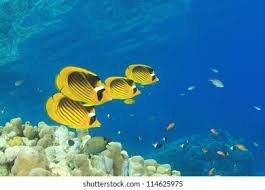
Muscle size adjustment surgery in cats is a specialized procedure designed to modify the dimensions of specific muscle groups. This article explores the significance of this surgery, reasons for its consideration, the surgical techniques involved, potential benefits, and postoperative care considerations.
**1. Importance of Muscle Size Adjustment in Cats:**
– **Functional Enhancement:**
Muscle size adjustment surgery aims to enhance the functionality of specific muscle groups, promoting improved mobility and strength in cats.
– **Aesthetic Improvements:**
The procedure is also undertaken for aesthetic reasons, addressing concerns related to muscle imbalances or asymmetry in feline anatomy.
**2. Reasons for Muscle Size Adjustment Surgery:**
– **Congenital Conditions:**
Cats with congenital muscle abnormalities or imbalances may benefit from surgery to achieve a more harmonious and functional muscular structure.
– **Injury Rehabilitation:**
Cats recovering from injuries that have affected muscle development or caused atrophy may undergo muscle size adjustment surgery to restore optimal function.
– **Aesthetic Considerations:**
Some cat owners opt for muscle size adjustment surgery to address aesthetic concerns, achieving a more balanced and symmetrical appearance.
**3. Surgical Techniques for Muscle Size Adjustment:**
– **Selective Muscle Resection:**
The surgeon selectively removes or adjusts portions of specific muscles, ensuring precision to achieve the desired size modification.
– **Augmentation Techniques:**
In certain cases, muscle size adjustment may involve augmentation techniques, such as the use of implants or grafts to enhance muscle volume.
**4. Preoperative Assessment and Planning:**
– **Muscle Evaluation:**
A thorough assessment of the cat’s muscle structure is conducted to identify areas for adjustment and establish a tailored surgical plan.
– **Health Screening:**
The overall health of the cat is evaluated to ensure suitability for surgery, and any potential risks or complications are identified.
**5. Anesthesia and Surgical Procedures:**
– **Anesthesia Protocols:**
Cats undergoing muscle size adjustment surgery receive specialized anesthesia to ensure a pain-free and stress-free experience during the procedure.
– **Precision in Adjustment:**
The surgeon employs precision techniques to modify muscle size, taking care to maintain the integrity of surrounding tissues and achieve the desired outcome.
**6. Postoperative Care and Monitoring:**
– **Wound Healing:**
Postoperative care involves monitoring the surgical site for proper wound healing, preventing infections, and addressing any signs of inflammation or discomfort.
– **Physical Therapy:**
Depending on the nature of the surgery, a tailored physical therapy regimen may be recommended to support the cat’s rehabilitation and optimize muscle function.
**7. Potential Benefits of Muscle Size Adjustment Surgery:**
– **Improved Mobility:**
Cats undergoing muscle size adjustment may experience improved mobility and function in the affected muscle groups.
– **Aesthetic Harmony:**
The surgery aims to achieve a more balanced and aesthetically pleasing muscular appearance, addressing any asymmetry or irregularities.
**8. Considerations for Cat Owners:**
– **Postoperative Observations:**
Cat owners play a crucial role in observing their cat’s behavior, monitoring the surgical site for any abnormalities, and promptly reporting concerns to the veterinary team.
– **Adherence to Care Guidelines:**
Following postoperative care instructions, including medication administration and any recommended physical therapy, contributes to the cat’s successful recovery.
**Conclusion:**
Muscle size adjustment surgery in cats is a specialized intervention aimed at enhancing both functionality and aesthetics. Open communication with veterinary professionals, adherence to postoperative care guidelines, and ongoing monitoring contribute to a positive outcome for cats undergoing this unique surgical procedure. Regular follow-up appointments with the veterinarian ensure continued assessment of the cat’s muscular health and overall well-being.





